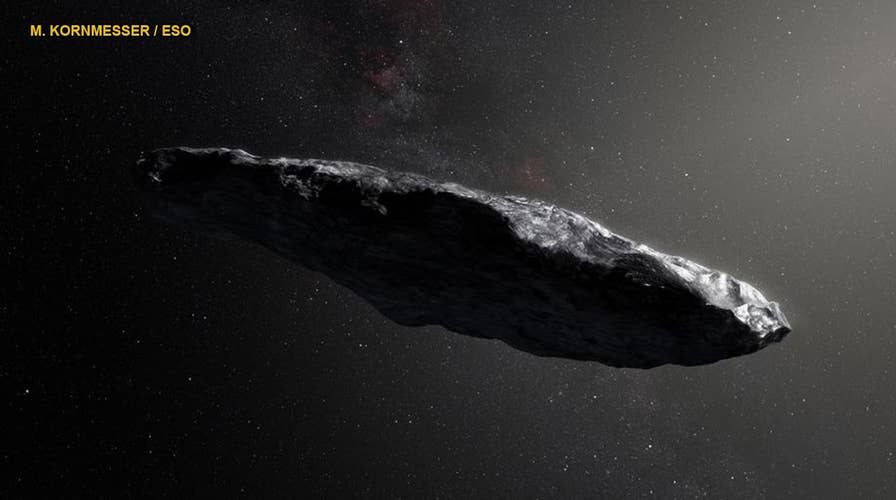Mysterious interstellar object could be alien 'lightsail'
A new study from the Harvard Smithsonian Center for Astrophysics says Oumuamua, the first interstellar object ever spotted in our solar system, could be 'a lightsail of artificial origin' sent from another civilization.
Say the name "Oumuamua" and you'll get all kinds of theories about what the mysterious interstellar object is – a light sail sent from an intelligent extraterrestrial civilization. A comet. An asteroid. The list goes on and on.
But while the object, which was discovered in October 2017 and is now making its way towards Saturn's orbit, has sparked much discussion about what it is, there is one thing it may not be, according to a new study.
One of a kind.
The study, written by John Forbes and Abraham Loeb of the astronomy department at Harvard University, suggests that there may be a great number of objects similar to Oumuamua floating around the Milky Way galaxy and humanity just had not looked for them.
INTERSTELLAR VISITOR 'OUMUAMUA' NEVER SHOULD HAVE LEFT HOME, THEORIES SAY
"We explore what may be learned by close encounters between extrasolar minor bodies like ‘Oumuamua and the Sun," Forbes and Loeb wrote in the study's abstract. "These encounters may yield strong constraints on the bulk composition and possible origin of ‘Oumuamua-like objects. We find that such objects collide with the Sun once every 30 years, while about 2 pass within the orbit of Mercury each year."
At its closest approach, Oumuamua was approximately 0.26 astronomical units (AU) away from the Sun or approximately 24.2 million miles. (One AU is approximately 93 million miles).
Another astronomer, Greg Laughlin from Yale University, also believes that there may, in fact, be trillions of objects similar to Ouamuamua in the Milky Way, according to Space.com.
Oumuamua, which is the Hawaiian name for "pathfinder" or "scout," was discovered in October 2017 by the PanSTARRS1 telescope after it spotted a new spot of light coming from a strange direction at an unusually fast speed.
In addition to the aforementioned paper with Forbes, Loeb is also the co-author of another paper that theorized that Oumuamua could be a "lightsail of artificial origin" sent from another civilization. "Considering an artificial origin, one possibility is that ‘Oumuamua is a lightsail, floating in interstellar space as a debris from an advanced technological equipment," researcher Shmuel Bialy and Loeb wrote in the paper.
MYSTERIOUS INTERSTELLAR OBJECT CONUNDRUM INTENSIFIES AS NASA REVEALS IT DIDN'T ORIGINALLY SEE IT
This theory was heavily criticized by Canadian physicist and astronomer Robert Weryk, the physicist and astronomer who discovered it.
Weryk said he believes it to be "a remnant from another solar system," adding in an interview with Canadian news outlet CBC that "It's just something that happened to run into us, and we were very lucky to have been operating the telescope that night and looking in that direction."
For its part, NASA has said that it is a "metallic or rocky object" approximately 400 meters (1,312 feet) in length and 40 meters (131 feet) wide. However, the government space said in November it did not originally see the object, perhaps adding some credence to Forbes and Loeb's theory.
Amid the intense debate, Forbes and Loeb effectively concede that we may never actually know what Oumuamua is.
COMETS AND ASTEROIDS COULD BE FLINGING LIFE ALL OVER THE GALAXY, STUDY FINDS
"As the debate continues between asteroidal and cometary interpretations, it remains unclear if any firm conclusions can be reached as ‘Oumuamua itself has rapidly faded from view on its way out of the Solar System," the authors wrote in their paper.
Ouamua is scheduled to enter Neptune's orbit in 2022 and in approximately 20,000 years, will make its out of the solar system for good.
CLICK HERE TO GET THE FOX NEWS APP
Follow Chris Ciaccia on Twitter @Chris_Ciaccia

